High Blood Pressure (Hypertension)
Table of Contents
Introduction
High Blood Pressure, or Hypertension, is a common condition where the force of the blood against the artery walls is consistently too high, leading to potential health problems such as heart disease and stroke. Often termed the “silent killer,” hypertension can develop over many years without noticeable symptoms, making it crucial to monitor and manage.
A person’s blood pressure should ideally be below 80 at the diastolic level and below 120 at the systolic level. According to the American Heart Association, high blood pressure occurs when the diastolic, or lower number, is between 80 and 89 and the systolic, or higher number, is between 130 and 139. Prolonged elevated blood pressure might lead to significant harm to blood vessels.
Long-term cardiovascular health is much better in those who maintain arterial pressures toward the low end of these pressure ranges, according to observational studies.
The ideal blood pressure target while taking medications to control blood pressure with hypertension, especially in older adults, is a topic of continuous medical dispute.
The American Heart Association’s blood pressure categorization scheme for adults eighteen years of age and above is displayed in the table. It is assumed that the numbers reflect the average of resting blood pressure measurements obtained during two or more medical visits.
Over the course of a 24-hour period, blood pressure typically varies minute by minute and exhibits a circadian rhythm, with peak readings in the early morning and evening and lowest readings at night.
There is evidence that blood pressure at night is a better predictor of cardiovascular events than blood pressure during the day and that losing the normal nighttime drop in blood pressure is linked to an increased risk of cardiovascular illness in the future.
Exercise, emotional responses, sleep, digestion, and the time of day all affect a person’s blood pressure (circadian rhythm). The other elements that affect a person’s blood pressure are age and sex.
The typical ranges in children vary depending on height and are lower than in adults. Based on the distribution of blood pressure in children in these nations, reference blood pressure values have been established for children in various nations.
Systolic and diastolic blood pressure tends to increase and decrease with age in humans. As a result, systolic blood pressure in the elderly frequently rises over the normal adult range; this is believed to be caused by increased artery stiffness.
The blood pressure values obtained from the left and right arms frequently deviate by a very little amount. On occasion, nevertheless, there may be a constant difference of more than 10 mmHg, indicating the need for more research, such as in the case of obstructive arterial disease.
Numerous issues may arise from this, some of which may be fatal. Among them are:
- cardiac arrest
- eyesight loss
- stroke
- renal illnesses
There are strategies for controlling hypertension, or elevated blood pressure. Although there aren’t usually any symptoms associated with the illness, routine screening can assist in determining whether preventative steps are needed.
According to the United States Preventive Services Task Force (USPSTF), around 45% of adult Americans suffer from high blood pressure.
This article examines the reasons behind high blood pressure as well as possible treatments. We also describe blood pressure readings that are deemed normal or too high by medical authorities.
What Is High Blood Pressure?
The heart is one muscle in the body that pumps blood throughout. The blood carries oxygen to the body’s essential organs as it moves. An internal ailment can occasionally make it more difficult for the heart to pump blood.
This could happen, for instance, if an artery narrows excessively. An extended period of elevated blood pressure might put stress on the arterial walls. Numerous health issues, some potentially fatal, may result from this.
Diagnosis And Blood Pressure Chart
The measurements for normal and high blood pressure are displayed in the chart below, per the Millimeters of mercury (mm Hg) used by doctors to measure blood pressure. A measurement of blood pressure consists of two parts.
The blood pressure measured at the top of a blood pressure reading, or systolic pressure, is the blood pressure during a heartbeat.
The blood pressure in between heartbeats is known as diastolic pressure. It represents the blood pressure during the time between heartbeats and is the measurement’s lowest number.
Consequently, the systolic and diastolic pressures of a blood pressure reading of 120/80 mm Hg are 120 mm Hg and 80 mm Hg, respectively. In order for a blood pressure monitor to function, blood flow must first be stopped, generally to the lower arm, and then allowed to resume.
Blood flow cannot be detected by a clinician using a manual stethoscope and sphygmomanometer until it begins. When the pressure gets close to systolic blood pressure, that’s when they’ll hear the first sound.
This displays the diastolic blood pressure after the sound stops again. Consequently, the systolic and diastolic pressures of a blood pressure reading of 120/80 mm Hg are 120 mm Hg and 80 mm Hg, respectively.
In order for a blood pressure monitor to function, blood flow must first be stopped, generally to the lower arm, and then allowed to resume.
Blood flow cannot be detected by a clinician using a manual stethoscope and sphygmomanometer until it begins. When the pressure gets close to systolic blood pressure, that’s when they’ll hear the first sound. This displays the diastolic blood pressure after the sound stops again.
How doctors interpret a patient’s blood pressure is shown in the table below:
Signs And Symptoms
People frequently refer to high blood pressure as the “silent killer” since the majority of those who have it do not exhibit any symptoms. It is considered a hypertensive crisis and needs medical intervention when blood pressure approaches 180/120 mm Hg.
At this point, an individual might have:
- headache
- queasy
- people throwing up
- lightheadedness
- hazy or double-vision
- bleeding noses
- palpitations of the heart
- panting for air
Anyone who encounters these symptoms ought to get help right away.
Symptoms In Females
Males and females may have distinct risks of high blood pressure due to hormonal variables.
The following are some factors that may put women at higher risk of high blood pressure:
- pregnancy,
- menopause
- birth control pill uses
High blood pressure during pregnancy may be a sign of preeclampsia, a potentially fatal illness that can harm the mother as well as the developing baby.
Preeclampsia symptoms include:
- headache
- modifications to vision
- tummy aches
- Edema-related edema
Everyone should attend all health check-ups and adhere to the screening standards, particularly if they are pregnant.
Is Menopause A key Risk Factor?
demonstrates that men are more prone than women to have high blood pressure before middle life. Then, the opposite occurs, about around menopause. Experts in health vary as to whether menopause is to blame for this, nevertheless.
Some contend that hormonal variables, particularly the presence of estrogen, help shield people against high blood pressure up until menopause.
People lose this defense as they go through menopause, which makes menopause the primary risk factor for cardiovascular disease in women.
Whether or if hormonal changes also play a part, others argue that other variables including age, an elevated body mass index, and dietary modifications may also raise the risk at this time.
Adolescents And Young Adults Symptoms
High blood pressure in teenagers might result from obesity or an underlying medical problem.
Potentially harmful elements :
- facet of metabolic disorders, including type 2 diabetes
- kidney conditions
- endocrine disorders that impact hormones
- Damage to blood vessels is caused by vascular disease.
- a neurological illness
Each of these illnesses may have unique symptoms. If high blood pressure develops, it will present with the same symptoms as in other groups.
According to a 2021 study, the decline in cardiovascular disease-related deaths has been less pronounced in those between the ages of 18 and 39 than it has been in older ones.
According to the author, people in the 20–39 age range had lower rates of high blood pressure awareness, treatment, and management.
In light of this, they advocate for earlier detection of high blood pressure in these age groups in order to lower the likelihood of developing cardiovascular issues later in life.
Symptoms In Children
Children may be affected by high blood pressure. Diabetes and obesity raise the risk, however, there are more underlying reasons as well, such as:
- tumor
- cardiac issues
- issues with the kidneys
- obstructive sleep apnea
- a rheumatologic condition
- issues with the thyroid
- a hereditary ailment like Cushing’s syndrome
- the usage of certain medications
- a diet heavy in sodium and fat
Similar to adults, children with high blood pressure rarely have symptoms.
If they do, though, they could consist of:
- headache
- exhaustion
- Modifications in mental state or cognition
- throwing up
Severe hypertension is most often indicated by these symptoms. They might also display signs of another disease.
Symptoms In Babies
High blood pressure in neonates and early infants can occasionally be caused by an underlying medical condition, such as kidney or heart problems.
Clinical examinations may reveal issues with the cardiopulmonary system or blood pressure. Hypertension may manifest as nonspecific or hardly perceptible symptoms, or it may coexist with symptoms of other illnesses.
A baby with hypertension might furthermore encounter:
- seizure
- irritability
- lethargic
- issues with feeding
- quick breaths
- apnea
Depending on what is causing the high blood pressure, there may be other symptoms.
Causes of High Blood Pressure
Blood pressure can rise in response to certain physiological alterations or in cases when an individual is born with a hereditary predisposition to a particular illness.
It may impact those who have:
- obesity
- cases of type 2 diabetes
- illnesses of the kidneys
- obstructive sleep apnea
- lupus
- scleroderma
- thyroid that is either too or too active
- congenital disorders, including acromegaly, Cushing’s syndrome
- Pheochromocytoma
There may not always be a clear cause. A physician will identify primary hypertension in this situation.
Reducing alcohol intake, quitting smoking, eating a low-fat diet, and keeping a reasonable weight will all help reduce the risk of high blood pressure.
How To Lower High Blood Pressure?
The course of treatment will be determined by a number of criteria, such as the degree of hypertension and the likelihood of heart disease or stroke. The more blood pressure rises, the more remedies the doctor will advise.
They could advise monitoring the blood pressure and changing one’s lifestyle if one has slightly elevated blood pressure.
If there is an increase in blood pressure, they will recommend medication. Depending on the severity of the hypertension and the emergence of comorbidities like renal disease, the available treatments may vary over time. A mix of many drugs may also be required for certain individuals.
Medications
Medications used traditionally to treat high blood pressure include:
Angiotensin-converting enzyme inhibitors
Certain hormones, such as Angiotensin II, are inhibited by angiotensin-converting enzymes (ACEs) from regulating blood pressure. Angiotensin II raises blood volume and narrows blood vessels, which raises blood pressure.
ACE inhibitors may lessen the kidneys’ blood flow, which would decrease their effectiveness. Those who take them must thus have frequent blood testing.
Furthermore, those who are pregnant or suffer from a disease that impairs the blood flow to their kidneys should avoid using ACE inhibitors.
The following adverse effects are possible with ACE inhibitors, and they normally go away in a few days:
- lightheadedness
- exhaustion
- areas of vulnerability
- migraines
- a chronic cough that is dry
Angiotensin II receptor antagonists may be recommended by a physician in place of the original medication if the adverse effects are severe or difficult to control.
Although the adverse effects of these substitute drugs are frequently less severe, they can nevertheless include headaches, dizziness, and elevated blood potassium levels.
Calcium Channel Blockers
Reducing blood vessel calcium levels is the aim of calcium channel blockers (CCBs). As a result, the vascular smooth muscle will relax, widening the arteries and lowering blood pressure as the muscle contracts less strongly.
However, those who have a history of liver illness, heart disease, or problems with blood circulation might not always be a good fit for CCBs. Which CCB type is safe to use and how to take them might be advised by a doctor.
When using CCBs, the following adverse effects are possible, however, they normally go away in a few days:
- Redness of the skin, usually on the cheeks or neck
- headaches
- swelling feet and ankles
- lightheadedness
- exhaustion
- skin rash
- occasionally enlarged abdomen
Thiazide Diuretics
A thiazide diuretic aids in the kidneys’ removal of salt and water, which decreases blood pressure and volume.
When taking them, the following adverse effects are possible, some of which may last:
- low blood potassium, which can have an impact on renal and heart health
- less ability to metabolize glucose
- problems with erection
Regular blood and urine testing is recommended for those on thiazide diuretics in order to check their potassium and blood sugar levels.
Beta-Blockers
Although beta-blockers were originally widely used to treat hypertension, doctors today often only recommend them in cases where no other therapies work. Blood pressure falls as a result of these drugs’ lowering of heart rate and pulse force.
Beta-blocker side effects might include:
- exhaustion
- chilly hands and feet
- sluggish heartbeats
- queasy
- episodes of diarrhea
Rarer adverse effects include:
- sleep disturbance
- bad dreams
- problems with erection
When someone has a hypertensive crisis—a condition marked by extremely high blood pressure beta-blockers are frequently prescribed.
Renin Inhibitors
Renin is an enzyme that the kidneys manufacture, and aliskiren (Tekturna, Rasilez) lowers its production.
Renin partially produces a hormone that narrows blood vessels and raises blood pressure. Blood pressure decreases and blood vessel enlargement occurs when this hormone is reduced.
Among the potential negative effects are:
- case of diarrhea
- lightheadedness
- symptoms similar to the flu
- exhaustion
- a cough
It is essential to carefully review the label of any prescription to ensure there are no drug interactions. Find out more about the drugs used to treat high blood pressure.
Diet
Dietary management can aid in the prevention and treatment of high blood pressure.
Plant-Based Foods
Plenty of fruits and vegetables, vegetables and omega-3 oils, and high-quality, unprocessed carbs like whole grains are all part of a healthy, well-balanced diet. When consuming animal products, people should cut off the fat and stay away from processed meats.
Lowering Salt Intake
Experts advise consuming more potassium and less salt to control or prevent high blood pressure. Reducing salt consumption to fewer than 5–6 grams daily may aid elevate cardiovascular health and lower systolic blood pressure in hypertensive patients by 5.6 mm Hg.
Nutritious Fats
Plant-based fat sources including avocados, almonds, olive oil, and omega oils can be beneficial when used in moderation. Moderation is advised while consuming processed and animal-based foods that contain saturated and trans fats.
The DASH Diet
Patients with high blood pressure are advised by doctors to follow the DASH diet. The DASH diet is centered on a consumption pattern that prioritizes fruits, vegetables, whole grains, legumes, nuts, seeds, and low-fat dairy products.
Alcohol
According to one research, drinking alcohol sometimes can help decrease blood pressure in women. However, other sources make the opposite claim.
Moderate alcohol drinking can also lead to high blood pressure. Regular users of alcohol who consume more than modest amounts will nearly invariably have higher blood pressure.
Caffeine
There has been conflicting evidence in the research on the relationship between blood pressure and caffeine. According to a 2017 study, those with high blood pressure seem to be safe to consume coffee in moderation.
Home Remedies
The American Heart Association suggests many lifestyle changes that can lower blood pressure, including:
- Taking care of stress
- giving up smoking
- eating a balanced diet
- exercising
- adhering to any recommended treatment plan from the physician
Before implementing any planned lifestyle changes, talk about them with a medical expert.
Regular Exercise
The majority of healthy individuals should engage in at least 150 minutes per week of moderate-intensity physical activity, according to the AHA.
This may take thirty minutes, or three ten-minute sessions, five days a week. Those with high blood pressure should also engage in this level of activity.
To make sure it’s appropriate, someone who hasn’t worked out in a while or who has received a new diagnosis should see their doctor before beginning a new physical activity program.
Losing Weight
According to studies, blood pressure can be lowered by even 5–10 pounds of body weight loss.
Reducing weight will also increase the blood pressure medication’s efficacy.
A diet heavy in plant-based foods and frequent exercise are two strategies for reaching and keeping a modest weight. Limiting one’s consumption of fat and added sweets is also advised.
Sleep
While getting more sleep won’t cure hypertension on its own, getting too little or poor quality sleep could exacerbate the condition. According to a 2015 review of data from the Korean National Health Survey, individuals with hypertension were more likely to sleep less than five hours per night.
Natural Remedies
The following may help reduce blood pressure, according to the National Center for Complementary and Integrative Health (NCCIH):
- Qigong, tai chi, yoga, and meditation
- Transcendental Meditation and Biofeedback
- supplements, such as chocolate, roselle, probiotics, green or black tea, flaxseed, and garlic
The NCCIH notes, however, that there is not enough data to support the idea that they can have an impact. It also cautions against the potential side effects of some supplements, such as elevated blood pressure or drug interactions.
While the organization maintains that therapy involving exercise and meditation is typically safe, some postures may not be suitable for those with high blood pressure.
Before beginning any alternative therapy, everyone should consult their physician.
Diagnosis
There are several tools available for taking blood pressure readings. A stethoscope-equipped manual sphygmomanometer or a digital one may be used by a physician. They encircle this pressure cuff around the subject’s arm.
Online retailers also provide digital blood pressure monitors that are appropriate for use at home. Usually, many readings are required to establish a diagnosis since different circumstances might influence the outcome.
Blood pressure varies:
- Depending on the time of day
- at stressful or anxious moments
- following a meal
On the other hand, if a reading indicates extremely high blood pressure, organ damage, or other issues, a doctor will act right away.
FAQs
The body needs potassium and salt as nutrients in order to control blood pressure. If you eat a diet high in sodium or low in potassium, your blood pressure may increase. tobacco use. Blood pressure can increase as a result of using tobacco products, smoking cigarettes, and being around secondhand smoke.
High blood pressure can harm blood vessels and internal organs by putting undue strain on the artery walls. The more harm that results from untreated high blood pressure, the longer it remains uncontrolled. Problems such as a heart attack or stroke can result from uncontrolled high blood pressure.
With stage 1 hypertension, there is a higher chance of unfavorable cardiovascular events. Changes in lifestyle alone can slow or even reverse the course of stage 1 hypertension.
Reducing salt in your diet, dropping weight if needed, quitting smoking, consuming less alcohol, and exercising regularly are all common first steps in the treatment of high blood pressure. Medication is frequently used to decrease blood pressure in addition to lifestyle modifications.
The ultimate lesson. Between the ages of 18 and 39, men’s healthy blood pressure is 119/70 mm Hg, while women’s is 110/68 mm Hg. Between the ages of 40 and 56, men’s healthy blood pressure is 124/77 mm Hg, while women’s is 122/74 mm Hg. For males over 60, a healthy blood pressure reading is 133/69 mm Hg, whereas for women it is 139/68 mm Hg.
Although there isn’t a cure for high blood pressure, patients may still make meaningful changes in their lives, such as changing their lifestyle and following their doctors’ recommended BP-lowering drugs.

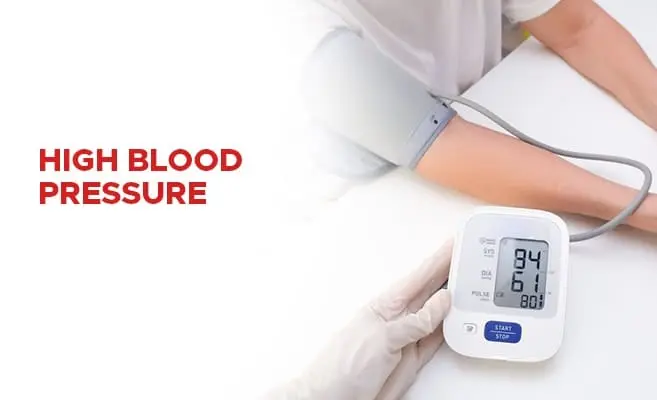
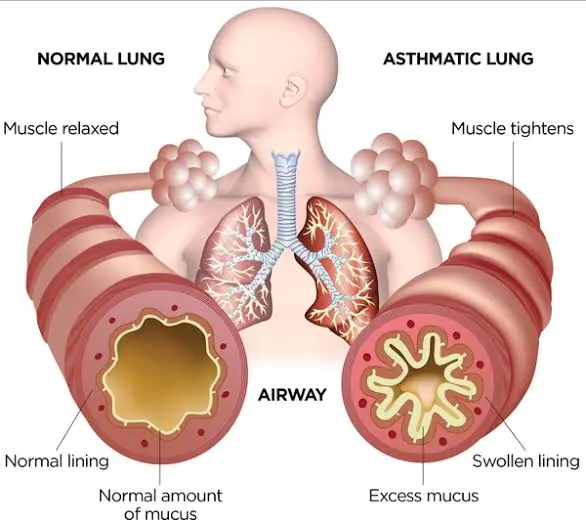

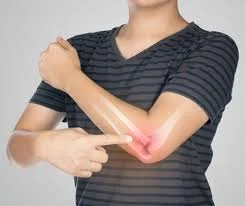
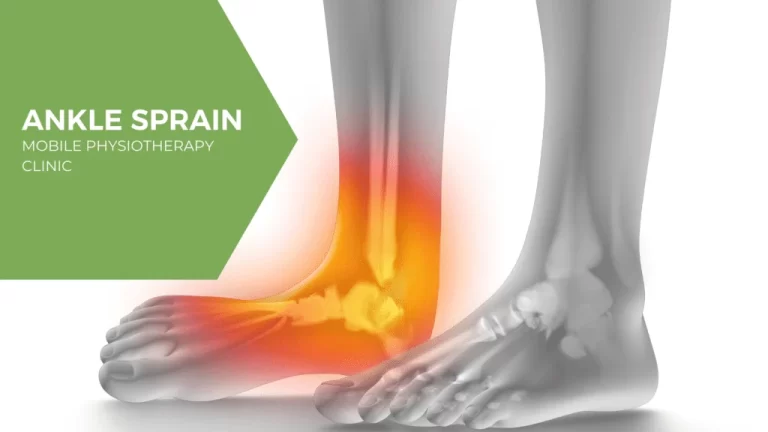
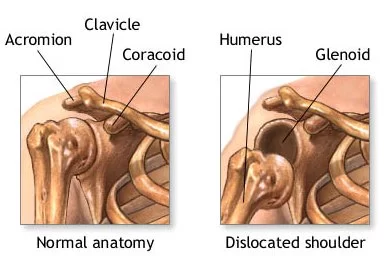
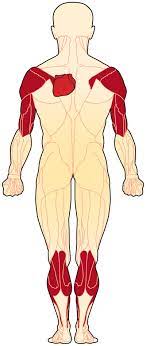
88 Comments